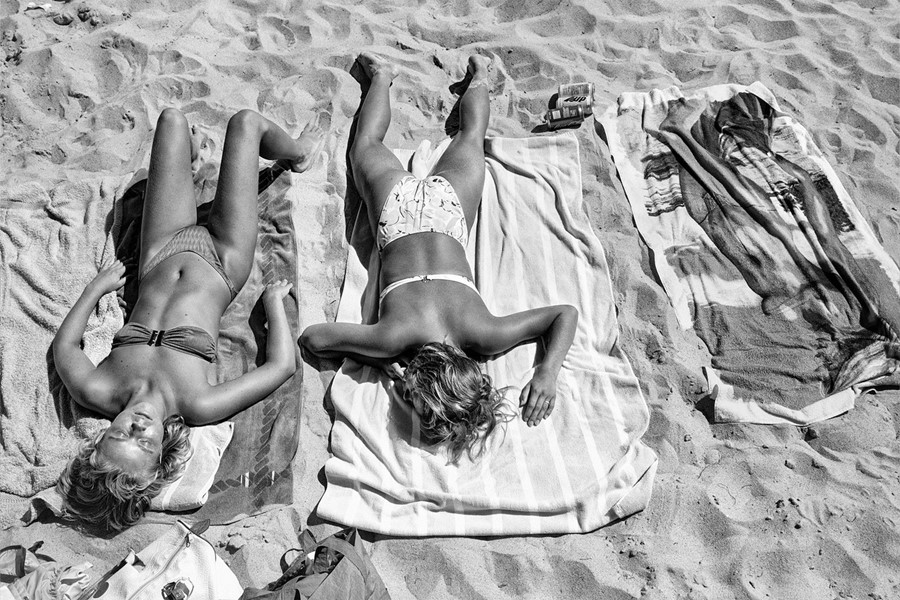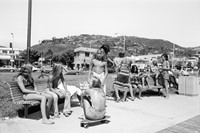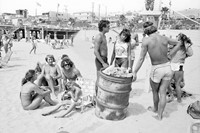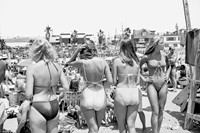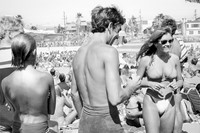Compiled in a new photo book, Tod Papageorge’s timeless photographs capture an intoxicating cocktail of sun, sand and surf. “I look at these pictures and they are alive,” he says
In 1975, American photographer Tod Papageorge drove across the country on a journey that would bring him to California’s golden shores. Bathed in the luminous rays of sun, sparkling across rippling waves of water and glistening flesh, he began making his earliest medium-format photographs. “I hoped to describe the beauty of the light and the sensuality of the physical bodies on the beach,” Papageorge tells AnOther. “That’s the same camera that I used a few years later to photograph in Studio 54, for pretty much the same reasons – all inspired by the great French-Hungarian photographer Brassaï, whose retrospective I’d seen at the Museum of Modern Art in 1968.”
In 1978, Papageorge received an invitation from telecommunications megacorp AT&T to contribute to a group exhibition at the International Center of Photography in New York. He returned to the beaches of Los Angeles for a deep dive into this cinematic slice of life, where people joyously abandoned the tiresome confines of life.
Papageorge made two more trips in 1981 and 88, the latter with his second wife, a dancer for the New York City Ballet, who was the first to envision the series as a book. Half a century in the making, At the Beach has now arrived, bringing Papageorge’s singular take on this fabled slice of American life. Long a landscape of myth and majesty, the California coast has been the toast of music, movies and media ever since Hollywood discovered the Hawaiian sport of surfing in their backyards.
Captivated by the intoxicating cocktail of sun, sand and surf, Papageorge embraced the liminal spaces of photography where fiction meets fact. “It’s always surprising to me how the photographs both record and transform what’s there, so you have this so-called ‘reality’ verging on a cliché, or you have this other thing that’s an interposition of the mechanical recording nature of the machine,” he says. “You see the whole thing in a new way because it is being described by a lens, not by the human eye.”
Papageorge’s exquisite sensitivity to the camera as a tool, much like a paintbrush or a pen, is rooted in his youth. “I came to photography through poetry. I was actually an ambitious college poet and won the university’s poetry prize,” says Papageorge, who invested his $15 prize money into an out-of-print copy of Henri Cartier-Bresson’s The Decisive Moment.
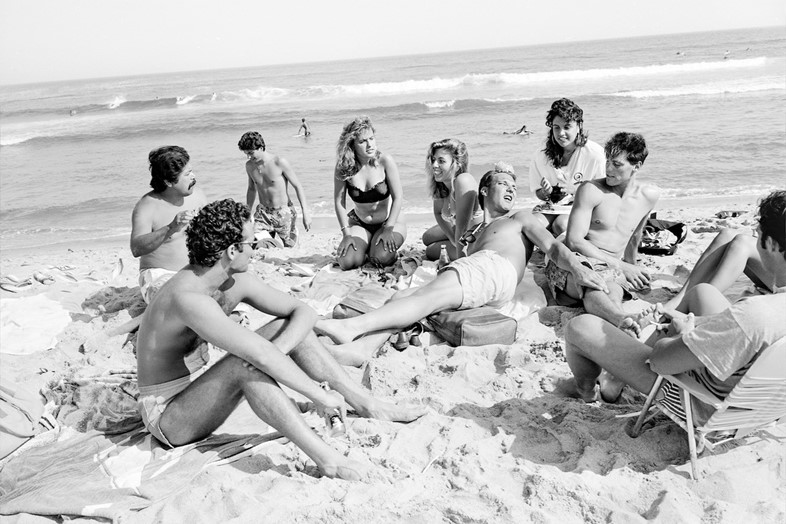
“I was taking a basic photography class in my last semester, and I looked at those photographs and said, ‘That’s poetry without the agony of putting words together,” Papageorge continues. “I decided I was going to be a photographer. It was a real conversion experience: sudden, complete, and irrevocable. I never moved away from that initial idea that the photograph was poetry. As I became more knowledgeable and more experienced, I came to see the most direct way of achieving that was to honour the descriptive ability of the medium itself.”
Just as a poet strings together lyrical rhythms through verse, Papageorge uses the camera to illuminate scenes where light dances across form, evoking a shared sense of musicality found throughout the arts. Here, the world is both canvas and muse for the artist’s imagination. Whether photographing at the beach, Studio 54, Central Park or the Acropolis, for Papageorge all the world is a stage upon which we play our part, revealing and concealing different parts of ourselves.
“I came to slowly understand that I was photographing in these arenas, one after another, but I didn’t really think that way at the time,” says Papageorge, who was also shooting on the streets of New York. “I was everywhere, but these subjects came out of such defined spaces that I didn’t really get it until after a certain point. And they all share the fact people are minimally dressed or extravagantly dressed in a performative kind of costume.”
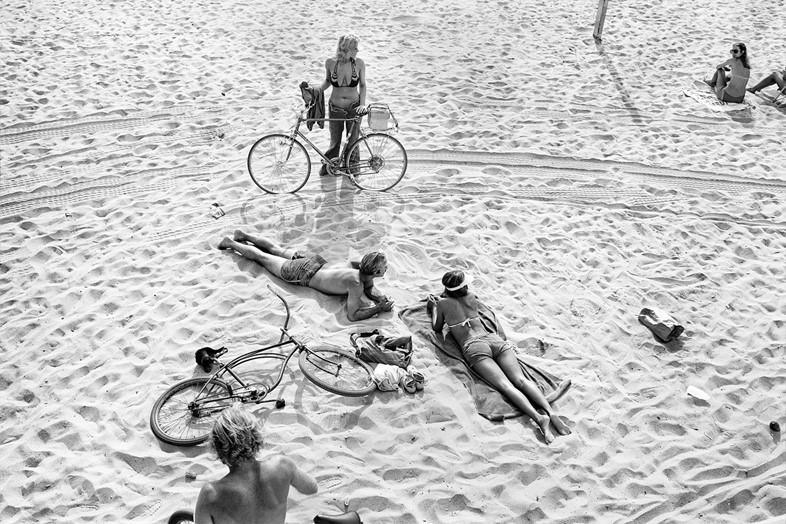
While the pictures evoke the tender utopia of an Edenic realm, where the pretences of status are stripped away like needless layers of clothes, Papageorge feels an immediacy of the image that underscores the curious nature of the photograph. “I was there and made the pictures, but somehow it’s somewhere embedded in my physiological memory so that they feel like they were taken yesterday,” he says. “I look at these pictures and they are alive. It’s very physical in that sense to me; it’s not the past. It’s just like when I read Chaucer: it’s not the past.”
Like all great art, Papageorge’s photographs capture and transcend the era in which they were made, never changing, yet still speaking to the present day through their masterful study of the pleasures of freedom and leisure.
At the Beach is published by Stanley/Barker, produced in collaboration with Galerie Thomas Zander.
